QuestionI have a 5 months old golden retriever. Till 4 months she was very obedient and learned the commands very fast. From last month she has started biting and jumping and is not stopping in spite of stopping her. She also barks a lot if we tie her for 15 mins as visitors come as she does not listen to us. I have started leash training from last week but she just pulls us and do not stop by any command. She has also started picking up and destroying things from bed or table in her reach if she is alone for sometimes when we go out somewhere. I m getting fed up of her. Please help me.
AnswerYoung Labs, which I know best, and other puppies tend to very bad about biting. You see a litter of them, and all the ones that are awake are biting another one or themselves. I am not even sure they realize that when they are alone, if they quit biting, they would quit being bitten. At 3 to 4 months they are getting their adult teeth, and it seems they spend every waking moment biting or chewing. One thing you can do at that stage is to knot and wet a piece of cloth. Then freeze it. The cooling will soothe the gums. Only let the puppy have it when you are there to watch it. I maintain a Lab's favorite chew toy is another Lab. Otherwise they settle for any person they can. They keep hoping to find one that won't yelp, jerk their hand away, and leave.
You just have to keep on correcting them, hundreds of times, not dozens. Provide sturdy, safe toys such as Kongs and Nylabones. Avoid things they can chew pieces off and choke on them. Keep them away from electrical cords. Crates are essential for most young Labs and other dogs.
Consistently is very important in correcting jumping and other problems. Quickly correcting him each and every time he jumps on somebody is very important. He must never get the affection he wants. A number of things have been used including some negative things inthe past. As part of the the trend away from negative methods, just step backwards leaving his front feet to fall to the floor. After a few tries, the dog may just stand there looking confused.
You should stay with a flat fabric or leather collar until your puppy is 5 months old. Then you can go with the metal slip collar with the rings on each end. Otherwise you could damage its windpipe. Put it on like this for the usual dog on the left position. Pull the chain through the one ring forming a "P". Facing the dog, slip it over its head. The free end comes over the neck allowing the other end to release pressure when the leash is slack. A five month old's head will still grow some. If you buy one that easily goes over the head, it still should come off leaving the ears when the dog finishes growing. You need a good 6' leather leash, although you may not want to give a young puppy a chance to chew it.
Easier dogs will give up their pulling with a few good snaps of the leash combined with a stern "Bad dog!". You can work up to forceful corrections with the leash doubled up in both hands and your whole body behind it. But you don't want to use any more force than you need. One gentle technique I like is to just stop when he pulls. He wants to go. If you move forward when the leash is slack, and stop when he pulls, he should quickly figure out the only way to get to go, is not to pull. This is about teaching him not to pull, not getting somewhere. The man that taught it to me said "If in a half hour you haven't made it out to the front walk, fine, you have taught him a lesson. Pulling the dog backwards is a good technique too.
Still, you may want to switch to a head collar. The leading brands are Promise, Haltie, and Gentle Leader. They have a strap going around the dogs nose looking something like a muzzle. They work by pulling the dogs head around. No other way gives you such great control with so little force. The prong collar is now a dangerous relic of value only for its macho looks. Do not consider using one without hands on instruction from somebody with plenty of experience with them.
Other dogs may not be as bad as the young Labs I am plagued with. Still your house and dog will be much safer with the dog in a crate when you are away. The dog may be happier in its den than loose in the house. It relaxes, it feels safe in its den. It rests, the body slows down reducing the need for water and relieving its self. Dogs that have been crated all along do very well. Many of them will rest in their crates even when the door is open. I think the plastic ones give the dog more of a safe, enclosed den feeling. They are harder for dogs to open too. Metal ones can be put in a corner or covered with something the dog can't pull in and chew. Select a crate just big enough for the full grown dog to stretch out in.
Leave it some toys. Perhaps a Kong filled with peanut butter. Don't leave anything in the crate the dog might chew up. It will do fine without even any bedding. You will come home to a safe dog and a house you can enjoy.
A dog that has not been crated since it was little, make take some work. Start out just putting its toys and treats in the crate. Praise it for going in. If you have been able to trust it with any bedding, put that in the crate. Feed it in the crate. This is also an easy way to maintain order at feeding time for more than one dog.

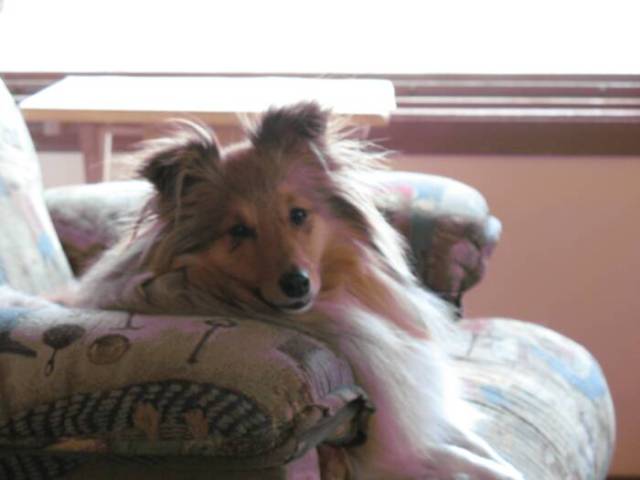 need help
Questionmy dog is a jack russel and he has hot spots an
need help
Questionmy dog is a jack russel and he has hot spots an
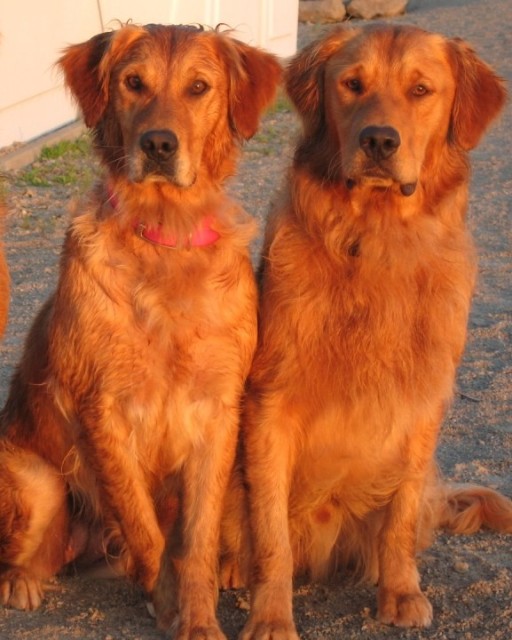 my golden puppy has bad skin problems
Questionso i have had this skin problem with my golden
my golden puppy has bad skin problems
Questionso i have had this skin problem with my golden
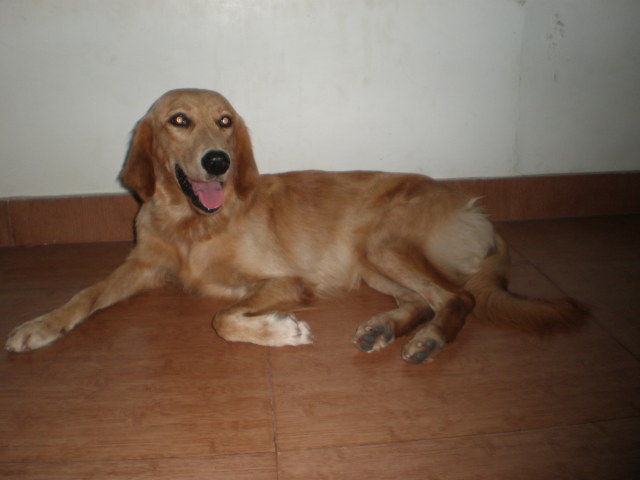 Food for a 8 months GR
QuestionRini
QUESTION: I have a 8 months old fem
Food for a 8 months GR
QuestionRini
QUESTION: I have a 8 months old fem
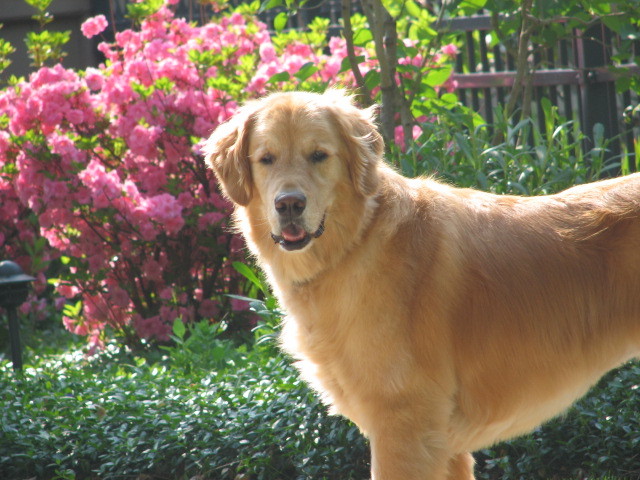 Goldens and cancer
Question
Duke
I just read your response to a women who
Goldens and cancer
Question
Duke
I just read your response to a women who
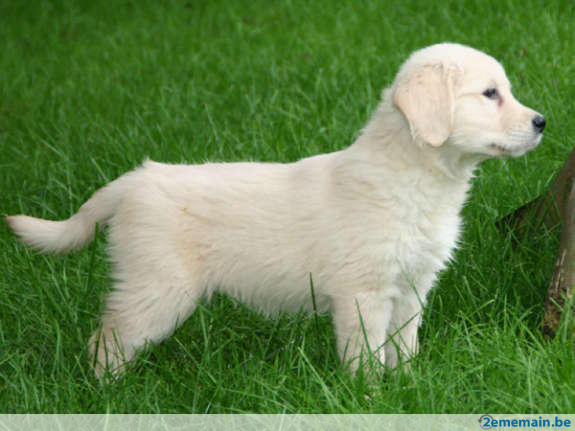 Golden retriever
QuestionGolden retriever puppy
QUESTION: Hello,
Golden retriever
QuestionGolden retriever puppy
QUESTION: Hello,